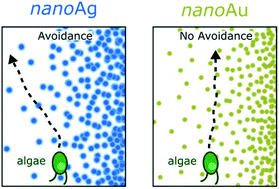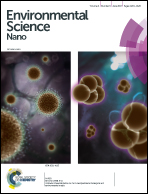Chlamydomonas reinhardtii displays aversive swimming response to silver nanoparticles†
Abstract
Engineered nanoparticles (ENPs) present in the environment are a potential risk to soil health, water safety and human health. Physical responses of microorganisms, such as avoidance behavior, could be an early indicator of biological outcomes upon exposure to ENP contamination. Chlamydomonas reinhardtii was exposed to gradients of nano-sized silver (nAg; 50 nm), gold (nAu; 50 nm) and sulfated polystyrene latex (nSPL; 22 nm) in a microfluidics device. Videos captured at targeted locations using enhanced darkfield microscopy showed that C. reinhardtii moved away from areas containing nAg at and above 6 × 108 particles per mL. C. reinhardtii also avoided nSPL at and above 3 × 1010 particles per mL, but did not avoid nAu at 6 × 108 or 6 × 109 particles per mL. Dissolution of Ag+ around nAg particles may elicit avoidance behavior, based on the response of C. reinhardtii to a gradient of Ag+ (at ≤1 μM). We conclude that C. reinhardtii detect and respond to toxicants, but they do not sense nanomaterials directly, given their inconsistent response to similar concentrations of nAg, nSPL and nAu. Rather, we postulate that their greater sensitivity to nAg than other ENPs is due to toxicity resulting from dissolved Ag+ around colloidal nAg particles.



 Please wait while we load your content...
Please wait while we load your content...